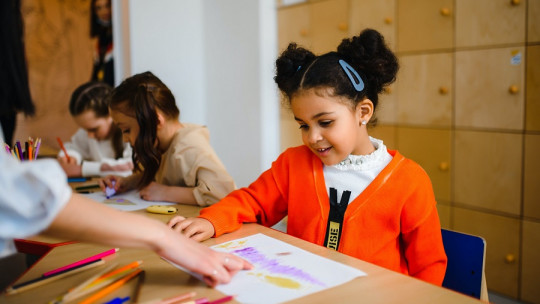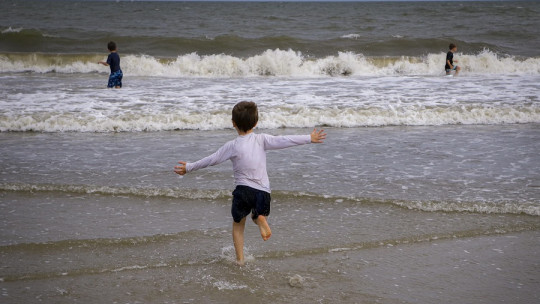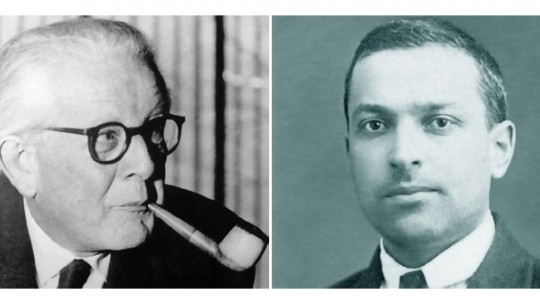
The stage of concrete operations is the third phase of development proposed by the Swiss psychologist Jean Piaget in his well-known Theory of Cognitive Development.
During this stage, boys and girls acquire a better ability to perform operations related to the mass, number, length and weight of objects. They are also capable of better ordering objects, in addition to being able to establish categories and organize them hierarchically.
Below we will look at this stage in more depth, in addition to seeing each of the skills that are acquired in this period and the criticisms that have been made of Piaget’s findings.
What is the concrete operations stage?
The concrete operations stage is a period of development proposed by Swiss psychologist Jean Piaget in his Theory of Cognitive Development.
This stage It begins more or less at age 7 and ends at age 11, being the third in theory, coming after the preoperational stage and before the formal operations stage. It is during these years that boys and girls acquire a greater ability to organize their ideas, developing better rational, logical and operational thinking.
At these ages, children acquire the ability to discover things they did not understand before and solve problems through language. They are able to present arguments without ties, reflecting a higher level of intelligence and operability compared to the two previous developmental periods, the sensorimotor and preoperational stages.
The main characteristic of this period is the ability to use logical or operational thinking. This implies being able to use the rules of thought, having a less fanciful view of real objects, in the sense that it understands that the changes that may occur in their number, area, volume and orientation do not necessarily mean that there are more or less. . Despite this great progress, Children can only apply their logic to physical objects, not to abstract, hypothetical ideas which is why we talk about the stage of concrete and non-formal operations.
Main characteristics of this stage of development
There are five main characteristics that can be identified in this stage proposed by Jean Piaget.
Conservation
Conservation is a child’s ability to understand that an object remains the same in quantity even if its appearance changes. That is to say, Regardless of what type of redistribution is made of matter, its mass, number, length or volume does not have to be affected For example, it is at this age that children understand that if we take a medium-sized ball of clay and divide it into three smaller balls we still have the same amount of clay.
Another, very recurrent example is that of the conservation of liquids. It is from the age of 7 that most boys and girls can understand that if we put water in a short, wide glass and change it to a thin, tall glass we still have the same amount of liquid.
This same example does not occur in 5-year-old children, according to Piaget. At this age, if we do the same exercise of changing the liquid from one glass to another with a different shape, children believe that we have more water.
To check how they were able to see the conservation of the number of elements Piaget conducted an experiment with tokens He gave the children a number of these tokens and asked them to make a row just like the one the experimenter had made.
Piaget then took his row and separated the tiles a little, asking the children if they thought there were more tiles. Most 7-year-olds could answer correctly concluding that it was at that age that the notion of numerical conservation was achieved.
But he also saw that the idea of conservation for all aspects, that is, number, mass, length and volume was not understood in a homogeneous way. Some children first learned one of one type without understanding another Based on this, Piaget concluded that there was a horizontal lag in this ability, that is, that there were certain inconsistencies in development.
Classification
The classification is the ability to identify the properties of things and categorize them based on them relate the classes to each other and use that information to solve problems.
The basic component of this skill is the ability to group objects according to a common characteristic, in addition to being able to organize categories into hierarchies, that is, categories within categories.
Piaget devised three basic options that would help understand how children develop the ability to classify objects and relate them to each other Thus, he talks about class inclusion, simple classification and multiple classification.
1. Inclusion of classes
It refers to the different ways that people have to communicate, encompassing ideas and concepts within various categories seeing how these relate or include each other.
2. Simple classification
It involves grouping a series of objects that will be united to use them for the same purpose. For example, organize geometric figures with different shapes and colors.
3. Multiple classification
It involves grouping a series of objects working in two dimensions or features.
Seriation
The serie is the ability to mentally arrange elements along a quantifiable dimension such as weight, height, size… It is for this reason that, according to Piaget, children of these ages know how to organize objects better.
Piaget verified this ability through an experiment, having a sample of children of different ages. In this experiment He presented them with tubes of different sizes, giving them the task of ordering them from largest to smallest size
Children from three to 4 years old had problems arranging them, while as they got older, they had a certain ability to do so. At 5, certain skills were evident, while at 7, he already seemed to know how to do the task.
Decentering
Decentering is a prosocial skill, which implies that the individual has the ability to consider aspects in serious situations or conflicts in order to seek a solution
In children at the end of kindergarten and beginning of primary school, this ability can be found partially, since many have an arrogant and defiant attitude towards their peers. However, between the ages of 7 and 11, many already know how to control and address these issues.
Transitivity
Regarding the concept of transitivity, it is characterized by find the relationship between two elements The knowledge that children acquire at these ages, both at school and at home, has a lot to do with this skill, since it is what allows them to relate ideas.
For example, they are able to relate that a ball, the field, the goal and sports clothing are related to the sport of soccer.
Criticisms of Piaget
Several psychologists after Piaget were critical of the findings made by the Swiss psychologist. These criticisms have focused, above all, on his statements about what age the capacity for conservation was acquired Among these we can highlight the following:
Research by Rose and Blank (1974)
One of the main criticisms of the conservation proposed by Piaget is related to how the researcher asked his subjects whether they saw differences or not after presenting them with changes in the objects.
Rose and Blank, in 1974, argued that At 5 years old it is not difficult to accidentally confuse children by asking them the same question twice If the question is repeated to them, they may think that the first answer they gave to the researcher was incorrect and that the adult is repeating the question to them, suggesting that the first thing they said was wrong and that they should give another answer.
According to Rose and Blank, this is a procedural error, and Piaget did, in fact, make it. The Swiss asked the children twice, before and after the transformation. Since the question was closed (is there more liquid now? yes/no), there was a 50% chance of getting it right and, since the 5-year-old children thought that they could be wrong when answering the first time, they changed their answer.
Rose and Blank replicated this experiment, but asked the question only once, after having transferred the liquid from a thicker container to a thinner one. They found that many children between 5 and 6 years old gave the correct answer anyway. This demonstrates that children can understand the idea of conservation at an earlier age than proposed by Piaget
Study by McGarrigle and Donaldson (1974)
Researchers McGarrigle and Donaldson in 1974 devised a study on conservation, in which the number of alterations was accidental.
They placed two identical rows of sweets in front of their experimental children, ages 4 to 6, checking that they saw that both were the same. However, suddenly, an element appeared that altered the rows, a stuffed animal that we are going to call the mischievous Teddy. The little bear ruined the order of one of the rows of sweets and returned to his box to hide After this, the children were asked if there was the same number of sweets and the 4- to 6-year-old children gave the correct answer more than half of the time.
This experiment suggested, once again, that Piaget’s idea that conservation was a notion acquired at more than 7 years old was not true. Apparently, this ability was manifested by children at younger ages, starting at 4 years old.
Dasen study (1994)
Dasen showed in 1994 that Children from different cultures manage to achieve the skills proposed for the stage of concrete operations at different ages depending on your cultural context.
Their sample consisted of Aboriginal children from remote parts of the central Australian desert, aged between 8 and 14 years.
He made them perform the tasks of liquid conservation and spatial awareness, finding that in this culture the capacity for conservation occurred later, between 10 and 13 years of age. Interestingly, spatial awareness skills developed earlier in Aboriginal children than in Swiss children. Thus, this study demonstrated that cognitive development was not purely dependent on maturation but cultural factors also influenced.
In the case of spatial awareness, it seems that this was a skill acquired early in nomadic peoples since for them being able to orient themselves through physical space is something fundamental. In the Swiss context, the acquisition of conservation at ages between 5 and 7 seems to be caused by schooling.








